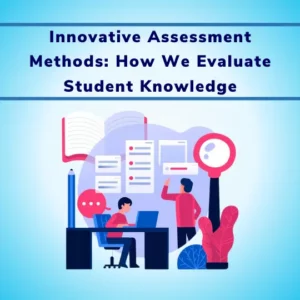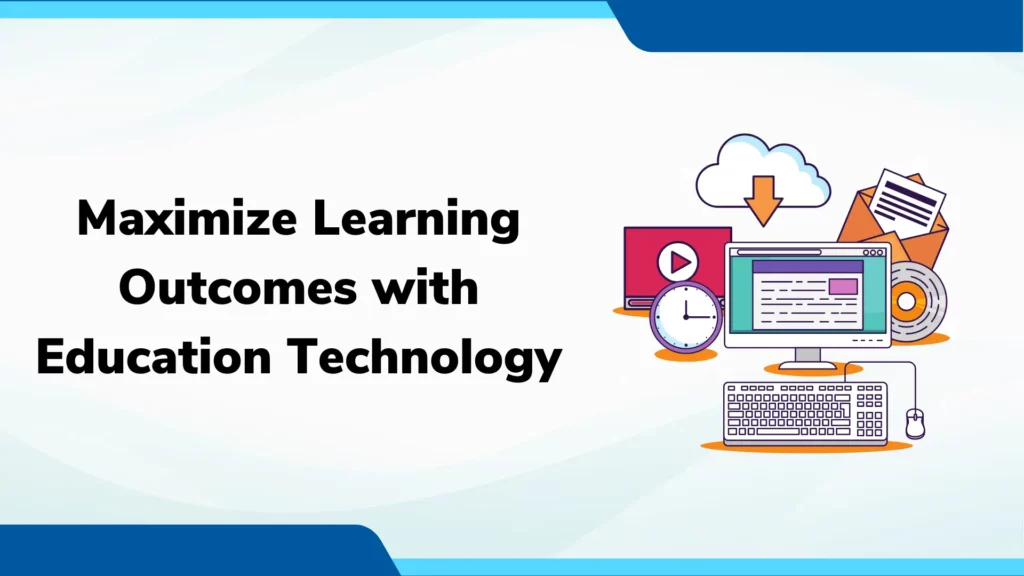
Article Contents
Introduction:
In today’s rapidly evolving world where abundant information is available at your fingertips, it is important to teach your students in the right amount and in the right way. The focus of teaching is now shifted from Memorization and understanding to curation and application. In today’s world, the learning outcome is the ultimate measure of the quality of teaching.
One of the major ways to improve the learning outcome is to make use of technology. By harnessing the power of technology, educators can leverage scientifically proven methods to enhance learning outcomes and create dynamic educational experiences. In this article, we will explore seven evidence-based strategies, highlighting the invaluable role of education technology in their implementation.
7 scientifically proven ways to maximize Learning Outcomes
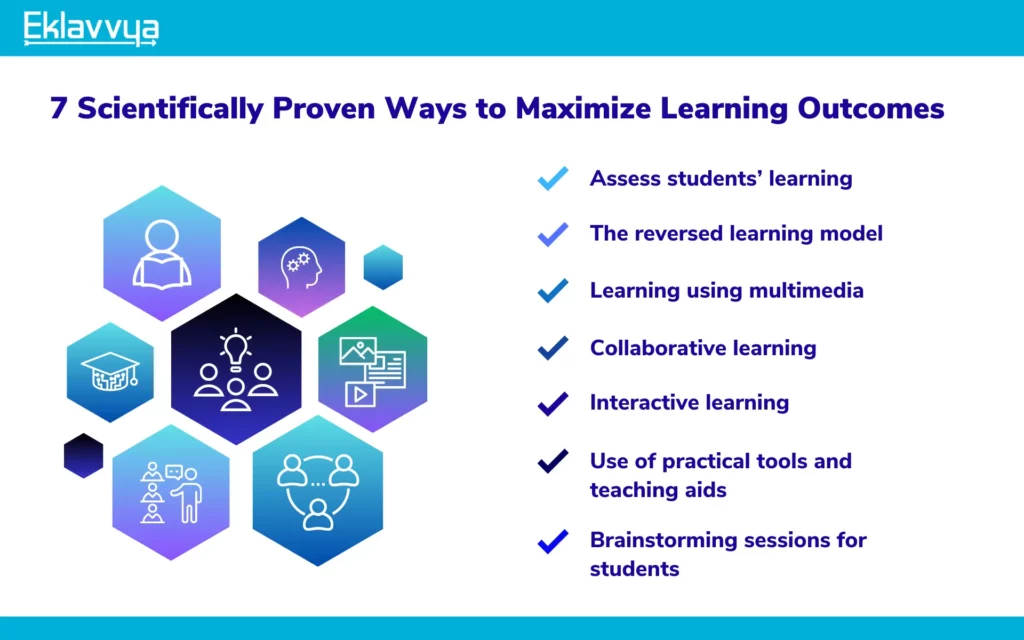
1. Assess students’ learning: Unlock great insights on learning patterns and improve accordingly
Assessments are one of the great ways to improve the learning outcome. Would you have studied in a disciplined manner if assessments were not there? The answer is clear. This emphasizes the importance of assessments in the learning process.
Assessments not only make us more disciplined but also help us to focus on the important topics, teach us how to apply the learnings and tell us where we stand in the competition.
“Assessments drive learning- If I say that an assessment can change the way you learn, it won’t be wrong, with objective evidence, it is proven that students learn in a more systematic way when there is an assessment. A study published in Economics of Education Review suggests that the approach of students in learning was driven by assessments. (Reference- 1)
While the majority of us agree that assessments are highly important in the overall learning process, we must not rely only on the traditional ways of assessment, with various research, it is proven that the novel approaches to assessments, like periodic assessments, two-stage assessments (2), open book assessments (3) help students in learning in a more systematic and disciplined way with improved learning outcomes.
The Tech Advantage–
Education technology empowers educators to assess students’ learning in innovative and comprehensive ways. Digital assessment tools provide instant feedback, allowing for timely interventions tailored to individual needs. Online platforms facilitate on-the-go assessments and enable educators to gain deeper insights into student progress.
Through analytics and data-driven insights, education technology enables personalized evaluation, empowering educators to identify areas of improvement and provide targeted support.
Data Speaks!
According to a survey published in Springer, about 55% of students had a positive attitude towards Online Proctored Exams, 21% had a neutral approach and the rest 24% had a negative approach towards online exams due to network issues. (Reference)
2. The reversed learning model: Education Technology as an Enabler
The reversed learning model is a new approach that might help improve student learning outcomes. It works by switching roles. The student becomes the teacher and vice versa. Also, it might be a good idea to introduce students to the idea of seeing others from a different perspective.
While I say that the revered learning model helps, it is scientifically proven that the reverse learning model has a neural basis (4). Various education experts suggest reversed learning as a futuristic and innovative approach to teaching. Often referred to as flipped learning, the use of reversed learning model has gone way beyond schools, reverse learning model is followed largely in marketing courses at University Level (5).
The Tech Advantage–
Education technology serves as a catalyst in implementing the reversed learning model. By embracing digital collaboration tools and online platforms, students become active participants in their own education.
Virtual classrooms, video conferencing, and learning management systems foster student-driven learning, where they can create, curate, and share educational content. Education technology enables seamless interactions between students and teachers, fostering a supportive environment that encourages exploration, critical thinking, and knowledge sharing.
Data Speaks!
It is well observed with data published in a journal, that about 39.8% of the academic self–efficacy and 18.1% of learning math student groups were affected positively by reverse learning, and that’s significant. (Reference)
3. Learning Using Multimedia: Captivating Minds with Education Technology
The use of multimedia, such as videos, animations, and interactive online resources, has been proven to enhance learning outcomes. Visual and auditory stimuli can significantly improve knowledge retention and comprehension. Incorporating multimedia elements into lessons captures students’ attention and makes complex concepts more accessible (6)
Furthermore, multimedia facilitates personalized learning experiences, allowing students to grasp information at their own pace and in their preferred learning style (7).
The Tech Advantage–
Education technology offers a vast array of multimedia resources that enhance engagement and comprehension. Interactive videos, animations, and digital presentations capture students’ attention and make complex concepts more accessible.
Adaptive learning platforms deliver personalized multimedia content, catering to diverse learning styles. Through immersive experiences and interactive simulations, education technology brings abstract ideas to life, inspiring curiosity, and deepening understanding.
Data Speaks!
As per data published by Deloitte, 75% of teachers believe that digital learning content (multimedia) will replace printed books in the upcoming 10 years. This emphasizes the pace of acceptance and adoption of multimedia in learning. (Reference)
4. Collaborative Learning: Improving the learning outcome; together!
Collaboration is a powerful tool for improving learning outcomes. When students work together, they exchange ideas, perspectives, and knowledge, fostering a deeper understanding of the subject matter.
Collaborative learning activities encourage critical thinking, problem-solving, and effective communication skills. By incorporating group projects, discussions, and peer-to-peer interactions, educators can create an environment that promotes active learning and cultivates teamwork. (8, 9,10)
The Tech Advantage–
Education technology empowers students to collaborate seamlessly, transcending geographical boundaries. Online discussion forums, collaborative documents, and virtual whiteboards facilitate real-time teamwork and knowledge sharing.
Video conferencing and screen-sharing tools enable students to engage in rich, interactive discussions. With education technology, collaborative learning becomes more inclusive, fostering a sense of community, promoting diverse perspectives, and developing essential skills for the digital age.
Data Speaks!
According to a survey published in 2020 the collaborative skills received a satisfaction rate of 88.1%, which was only above the rate for employability skills (86.8%), but was lower than technical skills (93.8%), foundation skills (93.7%), and adaptive skills (90.1%). (Reference).
This can be interpreted as collaboration skill is one of the favored and relatively less emphasized skills. Incorporation of collaborative learning will not only improve the learning outcome, but will also help students to build great collaborative skills.
5. Interactive Learning: Education Technology as a Gateway to Active Engagement
Interactive learning methods have been proven to enhance learning outcomes (11). By actively engaging students in the learning process, these methods stimulate curiosity, increase motivation, and improve knowledge retention.
Interactive learning provides practical application opportunities, enabling students to connect theoretical concepts to real-world scenarios. Technology, such as augmented reality (AR) and virtual reality (VR), can further enhance interactive learning experiences, immersing students in dynamic educational simulations (12,13)
The Tech Advantage–
Education technology unlocks opportunities for interactive learning experiences. Augmented reality (AR) and virtual reality (VR) applications transport students into immersive virtual environments, promoting hands-on exploration and experiential learning.
Gamified platforms and interactive educational apps cultivate active participation through challenges, simulations, and immediate feedback. By embracing education technology, educators empower students to actively engage with the learning process, igniting curiosity and facilitating deeper knowledge retention.
Data Speaks!
As per a study published in Frontiers, above 90% of students agreed that Virtual Reality helped them to easily learn, understand the concept of three-dimensional vectors, and visualize mathematical problems involving vectors. More than 75% of students agreed that they would attend the VR sessions in future. (Reference)
6. Use of Practical Tools and Teaching Aids:
The incorporation of practical tools and teaching aids enhances learning outcomes by providing tangible examples and reinforcing concepts. Models, diagrams, and charts make abstract ideas more concrete and easier to grasp.
These visual and tactile aids support multisensory learning, catering to diverse learning styles. Practical tools also encourage active experimentation and exploration, fostering a deeper understanding of the subject matter (14)
The Tech Advantage–
Education technology offers a wealth of digital resources and tools that enhance practical learning. Online libraries, digital textbooks, and educational websites provide access to a vast array of practical examples and case studies.
Simulation software and virtual laboratories allow students to conduct experiments and practice skills in a risk-free virtual environment. By integrating practical tools and teaching aids available through education technology, educators can bridge the gap between theory and practice, making learning more tangible and applicable.
Data speaks!
80% of students expressed their feelings that though they have not used this modern teaching aid in their classrooms, it is very necessary to use them. Because the use of modern aids in classroom can motivate the students for better learning (Reference)
7. Brainstorming Sessions for Students:
Brainstorming sessions encourage students to think creatively, share ideas, and collaborate. This technique stimulates critical thinking, problem-solving, and innovation. By providing a platform for open discussion and idea generation, educators foster an environment that values every student’s input.
Brainstorming sessions promote active engagement, boost confidence, and enhance communication skills. Additionally, they cultivate a supportive and inclusive classroom culture that nurtures creativity and intellectual growth. (15, 16, 17)
The Tech Advantage–
Education technology provides platforms and applications that amplify collaborative brainstorming sessions. Online brainstorming tools enable students to contribute ideas, share insights, and build upon each other’s creativity in real time. Collaborative mind-mapping software facilitates visual representation and organization of ideas.
By leveraging education technology, educators inspire a culture of innovation, critical thinking, and effective communication, nurturing creativity and empowering students to become active contributors to their learning journey.
Data speaks!
Geuna Et al. had conducted a study to assess the use of Brainstorming as a learning tool for students studying anatomy. Over 50% of the students agreed that brainstorming is highly effective in learning (Reference). Another similar study conducted by Binita Goswami Et al. demonstrates the same. (Reference)
Conclusion:
Incorporating these seven scientifically proven methods into educational practices can significantly improve learning outcomes. In this digital era, improving the learning outcome is largely driven by technology.
Education technology serves as a powerful ally in implementing scientifically proven methods to enhance learning outcomes. It enables educators to leverage innovative tools, platforms, and resources to create engaging, personalized, and interactive learning experiences.
Education technology empowers students to take ownership of their education, collaborate effectively, and explore the boundaries of knowledge. Technology equips students with essential skills for the future and prepares them to thrive in a rapidly evolving world.
As educators, let us embrace the power of education technology and harness its potential to revolutionize learning outcomes, empower students, and shape a brighter future for education. Together, we can create an educational landscape that is immersive, inclusive, and transformative.


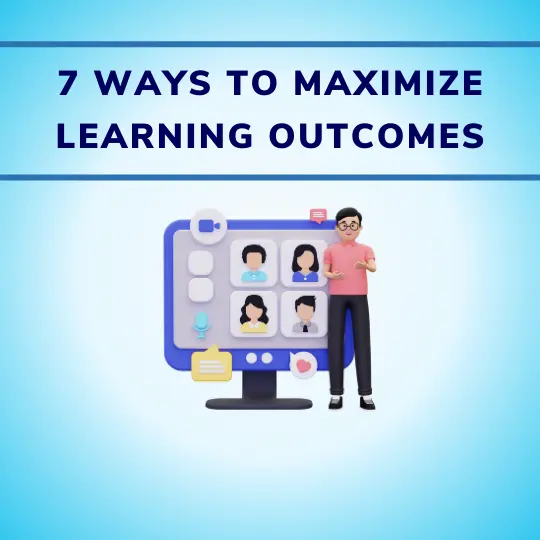
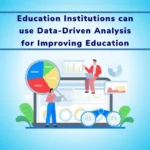
![How Government-Led Exams at 250+ Locations Are Setting New Standards of Integrity [Case Study]](https://www.eklavvya.com/blog/wp-content/uploads/2024/04/Enhancing-Exam-Integrity-Government-Certification-in-250-Locations-150x150.webp)
![Transforming Central Govt. Exams Evaluation: How Onscreen Marking is Leading the Charge [Case Study]](https://www.eklavvya.com/blog/wp-content/uploads/2024/04/How-Onscreen-Marking-Revolutionized-Central-Govt-Exams-Case-Study-1-150x150.webp)
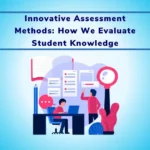
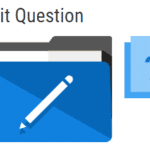
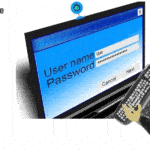
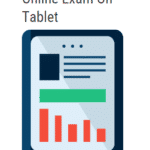









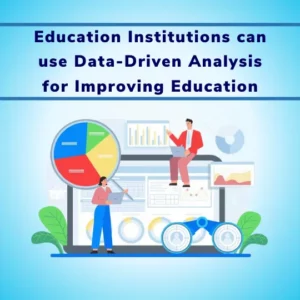
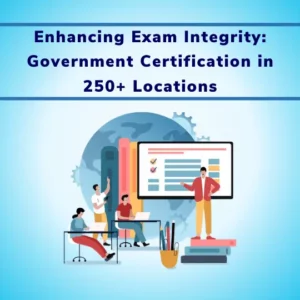
![How Onscreen Marking Revolutionized Central Govt Exams [Case Study]](https://www.eklavvya.com/blog/wp-content/uploads/2024/04/How-Onscreen-Marking-Revolutionized-Central-Govt-Exams-Case-Study-1-300x300.webp)
